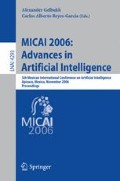Abstract
This paper presents a method based on chemometrics analysis to select the optimal wavebands for variety discrimination of Chinese cabbage seed by using a Visible/Near-infrared spectroscopy (Vis/NIRS) system. A total of 120 seed samples were investigated using a field spectroradiometer. Chemometrics was used to build the relationship between the absorbance spectra and varieties. Principle component analysis (PCA) was not suitable for variety discrimination as the principle components (PCs) plot of three primary principle components could only intuitively distinguish the varieties well. Partial Least Squares Regression (PLS) was executed to select 6 optimal wavebands as 730nm, 420nm, 675nm, 620nm, 604nm and 609nm based on loading values. Two chemometrics, multiple linear regression (MLR) and stepwise discrimination analysis (SDA) were used to establish the recognition models. MLR model is not suitable in this study because of its unsatisfied predictive ability. The SDA model was proposed by the advantage of variable selection. The final results based on SDA model showed an excellent performance with high discrimination rate of 99.167%. It is also proved that optimal wavebands are suitable for variety discrimination.
Access this chapter
Tax calculation will be finalised at checkout
Purchases are for personal use only
Preview
Unable to display preview. Download preview PDF.
References
Park, B.J., Liu, Z.C., Kanno, A., Kameya, T.: Genetic Improvement of Chinese Cabbage for Salt and Drought Tolerance by Constitutive Expression of a B. Napus LEA Gene. Plant Sci. 169, 553–558 (September 2005)
Jacobsen, S., Søndergaard, I., Møller, B., Deslerc, T., Munck, L.: A Chemometric Evaluation of the Underlying Physical and Chemical Patterns that Support Near Infrared Spectroscopy of Barley Seeds as a Tool for Explorative Classification of Endosperm Genes and Gene Combinations. J. Cereal Sci. 42, 281–299 (2005)
Tesfaye, M.B., Tom, C.P., Mark, S.: Development of a Calibration to Predict Maize Seed Composition Using Single Kernel Near Infrared Spectroscopy. J. Cereal Sci. 43, 236–243 (2006)
Fassio, A., Cozzolino, D.: Non-destructive Prediction of Chemical Composition in Sunflower Seeds by Near Infrared Spectroscopy. J. Ind. Crop. Prod. 20, 321–329 (2004)
McCaig, T.N.: Extending the Use of Visible/near-infrared Reflectance Spectrophotometers to Measure Colour of Food and Agricultural Products. Food Res. Int. 35, 731–736 (2002)
Groos, C., Bervas, E., Charmet, G.: Genetic Analysis of Grain Protein Content, Grain Hardness and Dough Rheology in a Hard Bread Wheat Progeny. J. Cereal Sci. 40, 93–100 (2004)
Seregeĺy, Z., Deaḱ, T., Bisztray, G.D.: Distinguishing Melon Genotypes Using NIR Spectroscopy. Chemometr.Intell. Lab. 72, 195–203 (2004)
Younes, C., Dominique, B.: Reduction of the Size of the Learning Data in a Probabilistic Neural Network by Hierarchical Clustering. Application to the Discrimination of Seeds by Artificial Vision. Chemometr. Intell. Lab. 35, 175–186 (1996)
Kemsley, E.K., Ruault, S., Wilson, R.H.: Discrimination Between Coffea Arabica and Coffea Canephora Variant Robusta Beans Using Infrared Spectroscopy. Food Chem. 54, 321–326 (1995)
Lankmayr, E., Mocak, J., Serdt, K., Balla, B., Wenzl, T., Bandoniene, D., Gfrerer, M., Siegfried, W.J.: Chemometrical Classification of Pumpkin Seed Oilsusing UV–Vis, NIR and FTIR Spectra. Biochem. Biophys. Methods. 61, 95–106 (2004)
Zhu, X.L., Yuan, H.F., Lu, W.Z.: Prog. Chem. 16, 528 (2004)
He, Y., Feng, S.J., Deng, X.F., Li, X.L.: Study on Lossless Discrimination of Varieties of Yogurt Using the Visible/NIR-spectroscopy. Food Research International 39, 645–650 (2006)
Goḿez, A.H., He, Y., Pereira, A.G.: Non-destructive Measurement of Acidity, Soluble Solids and Firmness of Satsuma Mandarin Using Vis/NIR-spectroscopy Techniques. J. Food Eng. 77, 313–319 (2006)
Fisher, R.A.: The Use of Multiple Measurements in Taxonomic Problems. Ann Eugenics 7, 179–188 (1936)
Author information
Authors and Affiliations
Editor information
Editors and Affiliations
Rights and permissions
Copyright information
© 2006 Springer-Verlag Berlin Heidelberg
About this paper
Cite this paper
Wu, D., Feng, L., He, Y. (2006). Selection of the Optimal Wavebands for the Variety Discrimination of Chinese Cabbage Seed. In: Gelbukh, A., Reyes-Garcia, C.A. (eds) MICAI 2006: Advances in Artificial Intelligence. MICAI 2006. Lecture Notes in Computer Science(), vol 4293. Springer, Berlin, Heidelberg. https://doi.org/10.1007/11925231_58
Download citation
DOI: https://doi.org/10.1007/11925231_58
Publisher Name: Springer, Berlin, Heidelberg
Print ISBN: 978-3-540-49026-5
Online ISBN: 978-3-540-49058-6
eBook Packages: Computer ScienceComputer Science (R0)

